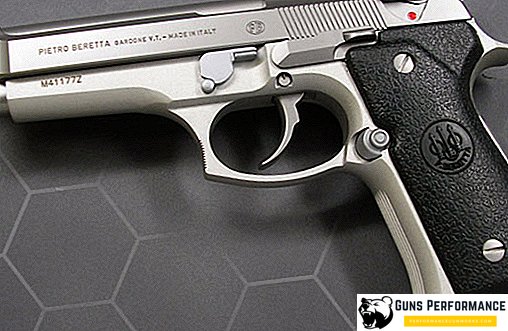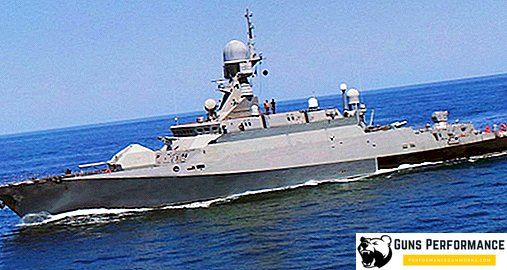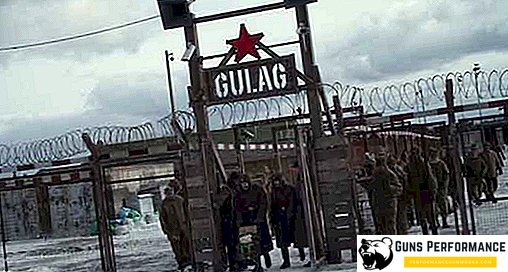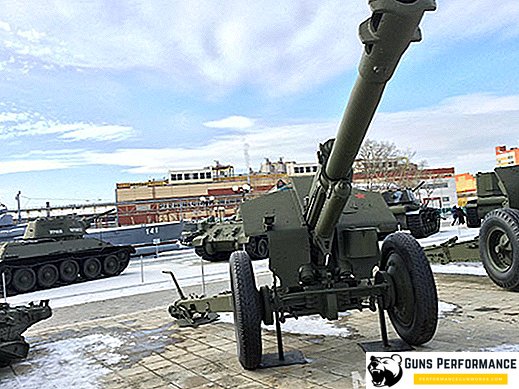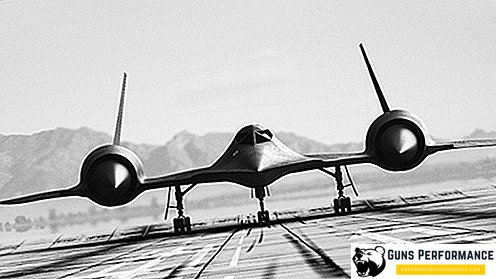
The Mi-6 is a Soviet heavy multipurpose helicopter created at the Mil Design Bureau in the late 50s. In many ways, this car can be called a sign for the Mil Design Bureau and for the Soviet helicopter industry as a whole. The layout of the Mi-6 became classic and was later used on other helicopters of the Mil Design Bureau. It was this helicopter that determined the superiority of the Soviet Union in the field of heavy helicopters for many years to come. Foreign media at the time wrote that the Soviet giant could easily lift any western helicopter at full load.
The Mi-6 helicopter in its technical characteristics (primarily in terms of carrying capacity) at the time of its creation was significantly superior to all existing foreign analogues and even promising machines. The development of such a machine was really a very ambitious task: when the Mil Design Bureau began work on the creation of the Mi-6 with an take-off weight of more than forty tons, the heaviest foreign cars had a mass of no more than fifteen tons.
The first flight of the Mi-6 took place on June 18, 1957, and in 1959 its mass production began at the helicopter plant in Rostov. It lasted until the 1980s. Mi-6 was operated until 2004. In total, more than 930 units of this machine were manufactured.
The helicopter was repeatedly improved, there are more than ten modifications of this machine. More than ten world records were set on the Mi-6, some of them remained unsurpassed until the mid-80s.
In the USSR, the Mi-6 was actively exploited both in the armed forces and in civil aviation. In addition, this helicopter was exported to Egypt, Algeria, Iraq, Syria, Peru, Poland, Vietnam and Indonesia.

History of creation
The successful development and launch into mass production of the transport helicopter Mi-4 allowed the chief designer Mily and his subordinates to believe in their own strength and to embark on even more ambitious projects. After analyzing the trends in the development of the ground forces of that time, the design bureau experts concluded that the next stage in the development of helicopter construction should be a machine with a carrying capacity of at least six tons.
The designers gave an account of the difficulty of their task: in those years, both in the USSR and abroad, attempts were made to create a helicopter with a take-off weight of more than 14 tons, but all of them were unsuccessful.
Work on the new machine began in 1952, but officially the development started only on July 11, 1954, after the corresponding government decree was issued. In it, the designers were instructed to create a helicopter with the following technical characteristics: speed - 300-350 km / h, ceiling - 6 thousand meters, carrying capacity - 6 tons (8 tons at overload).
State tests of the new helicopter were to begin in 1957.
Initially, many questions were about the layout of the future machine. Most of the specialists of that time did not believe that a heavy helicopter could be built according to the classical scheme with one rotor. However, Miles preferred it for his new helicopter. To do this, it was necessary to equip the machine with a rotor with an unprecedented diameter of more than thirty meters.
During this period, the United States linked the increase in helicopter carrying capacity with the further improvement of piston engines, but Soviet engineers concluded that it would be more expedient to use gas turbine engines for the new machine. On the helicopter they planned to install the TV-2F engine, and P. A. Solovyev was involved in its refinement.
The outline design of the helicopter was approved in June 1955. After that, the construction of the prototype began. She received the designation Mi-6. June 18, 1957 for the first time a new heavy helicopter took off. October 30, 1957 Mi-6 lifted cargo 12 tons to a height of 2432 meters. This achievement was a world sensation and doubled the achievement of the American S-56 cargo helicopter.

In 1959, the serial production of the new helicopter was established at the Rostov plant number 168, where it continued until 1980.
This is not to say that the development of the new machine was quick and smooth. The Mi-6 really was a unique helicopter that had no analogues before. Therefore, the flaws and defects in the car enough. After the first stage of testing, it became clear that the helicopter did not reach the characteristics specified by the customer. There was a shortage of speed, altitude, and flight range, although the payload of the Mi-6 was beyond praise.
Most of the problems were with the main rotor and tail rotor blades. The developers proposed a fundamentally new design of rotor blades: sections that were not connected to each other were attached to the metal spar. This made it possible to significantly reduce the load at the total bending of the blade.
The development of the new tail rotor, which was made of delta-wood, made it possible to increase the speed of the helicopter to 270 km / h.
Quite a lot of time and effort was spent on reworking the D-25V turboshaft engine.
State tests of the Mi-6 were completed only in 1962, while these helicopters have long been used in combat units. And I must say that the operation was accompanied by significant difficulties. At that time, the car was still very "raw". Not without accidents and disasters.
In 1960, for the Mi-6, new rotor blades with a honeycomb core were developed. Soviet industry is very hard to master this new technology for it. New blades allowed to significantly increase the speed, range and ceiling of the car. Their life was also significantly increased (up to 500 hours).
In 1964, the first export deliveries of the Mi-6 began. In the USSR, this helicopter was widely used in various sectors of the national economy: as a cargo and passenger vehicle, an ambulance helicopter, in search and rescue operations and in extinguishing fires. At the end of the 50s, the Luna mobile missile system was adopted by the Soviet army, the Mi-6 was used for its transfer.
Over time, numerous modifications of the Mi-6 were developed for the military: an anti-submarine helicopter, an air command center, a tanker and a radio-electronic jamming helicopter.

In the 1960s, not a single large-scale exercise of the Soviet armed forces was complete without the use of the Mi-6.
This helicopter was not designed to perform percussion tasks, but an experimental version of the machine with missiles on external hangers was created. Mi-6 took part in several conflicts, but its main function remained transport. Mi-6 participated in the Vietnam War, used in the Middle East, the Soviet troops used this helicopter in Afghanistan. The last conflict in which the Mi-6 had to participate was the Chechen campaign. These helicopters brought ammunition and fuel to the front edge, evacuated the wounded and dead fighters.
The accidents and disasters that happened to the Mi-6 are overwhelmingly connected with the human factor - the “six” turned out to be a fairly reliable machine. In 1996, a helicopter crash occurred in the Leningrad Region, after which Mi-6 flights were permanently suspended. The flights of this vehicle were finally banned only in 2002, and this order did not concern the use of the Mi-6 in the North Caucasus. The official end of the helicopter operation in Russia is 2004, although in other countries the use of the helicopter continues.
Description
The Mi-6 helicopter is made according to the classical scheme with a wing, one main and one tail rotor, two gas turbine engines and a three-bearing chassis.
The Mi-6 has an all-metal fuselage with cockpit located in the nose. The front cockpit is designed for the navigator, the middle one is for two pilots, and the back one is for the radio operator and the flight engineer.

The main part of the fuselage is a cargo cabin, which has a volume of 80 cubic meters. In its rear part there is a cargo hatch with a ladder and flaps opening to the sides. The helicopter can carry cargo weighing up to 12 tons or 65 passengers, which are placed on the folding seats. In case of emergency, the car can take on board 150 people. The cargo compartment has a reinforced floor with mooring nodes, which allows the helicopter to carry heavy equipment.
The tail boom has a semi-monocoque construction with a stabilizer and ends with an end beam.
Mi-6 has a wing, which consists of a center section and consoles of the type.
The helicopter chassis is a tricycle non-retractable with a front caster wheel. There is a support on the tail boom. Mi-6 can take off and land both vertically and in an airplane.
The Mi-6 is equipped with a five-blade rotor, which is tilted forward 5 °. The mounting of the blades is hinged, there are hydraulic dampers. The blades are equipped with anti-icing system. The tail rotor has four blades made from delta wood.
The power plant Mi-6 is two turboshaft GTD-25V with a free two-stage turbine. The engines are mounted on top of the fuselage in a special fairing.
Fuel is placed in 11 soft tanks with a total volume of 3250l. Installation of suspended additional tanks and tanks in the cargo cabin is possible.
The helicopter is equipped with two hydraulic systems: primary and secondary. The auxiliary system controls the windshield wipers, opens the cargo compartment doors, lowers and raises the ladder.
On military modifications of the Mi-6 in the nose was installed 12.7-mm machine gun.

Specifications
| Modification | Mi-6 |
| Length m | 33,18 |
| Height, m | 9,86 |
| Weight, kg | |
| empty | 26500 |
| normal takeoff | 39700 |
| maximum takeoff | 41700 |
| engine's type | 2 GTE D-25V |
| power, kWt | 2 x 4100 |
| Max. speed, km / h | 250 |
| Cruising speed, km / h | 200 |
| Practical range, km | 500 |
| Practical ceiling, m | 4500 |
| Crew | 5 |
| Payload: | 6 thousand kg in the cabin (up to 12 thousand kg) or 8000 kg |
| on the external load |



